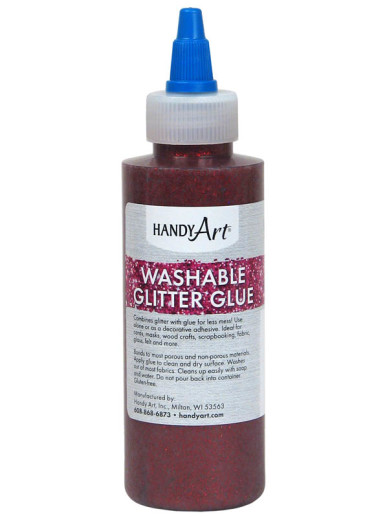We use cookies to make your experience better. To comply with the new e-Privacy directive, we need to ask for your consent to set the cookies. Learn more.
Glitter Glue (Washable) Red - 4 oz.
Handy Art® Washable Glitter Glue combines glitter with glue for less mess while adding sparkle, shimmer and shine to all your art and craft projects! Use alone or as a decorative adhesive on cards, masks, wood crafts, scrapbooking, fabric, glass, felt and more.
The best feature of any glitter glue-for kids and adults-is that it is so much less messy than using white glue and loose glitter. These are nice-sized bottles of glitter glue perfect for families, scout groups, Sunday school, classrooms or any individual who likes to add a touch of sparkle to about anything they make. Red is a bold primary red; blue is bright royal blue and green is a lovely kelly/emerald green. You may as well get one of each color! The glitter particles are fine and stay suspended without the need to shake the bottle. Making storage a snap, the glitter comes in plastic squeeze bottles with an attached, twist-to-open-and-close cap. Use on cards, posters, clay, wood, masks, glass, felt and more. Non-toxic, glitter cleans with soap and water. ~ Sara
| Product Format: | Other |
|---|---|
| Grades: | PK-AD |
| Brand: | Rock Paint |
| EAN/UPC: | 075176152457 |
| Length in Inches: | 5.75 |
| Width in Inches: | 1.625 |
| Height in Inches: | 1.625 |
| Weight in Pounds: | 0.35 |
Be the first to review this item
- Start typing and we'll see if it was already asked and answered.
- If there aren't already some matches, submit a new question.
- You'll get fast answers from customers who really own the item(s) and from our product experts. (About half the time you'll get an answer in under 2 hours!)
- Which items will best meet your needs
- What customers who own an item think of it
- How to use, fix, or take care of an item
- Product information
- General advice related to the types of products we sell
- Our store policies
For questions about an order you have placed, please contact customer support directly.









